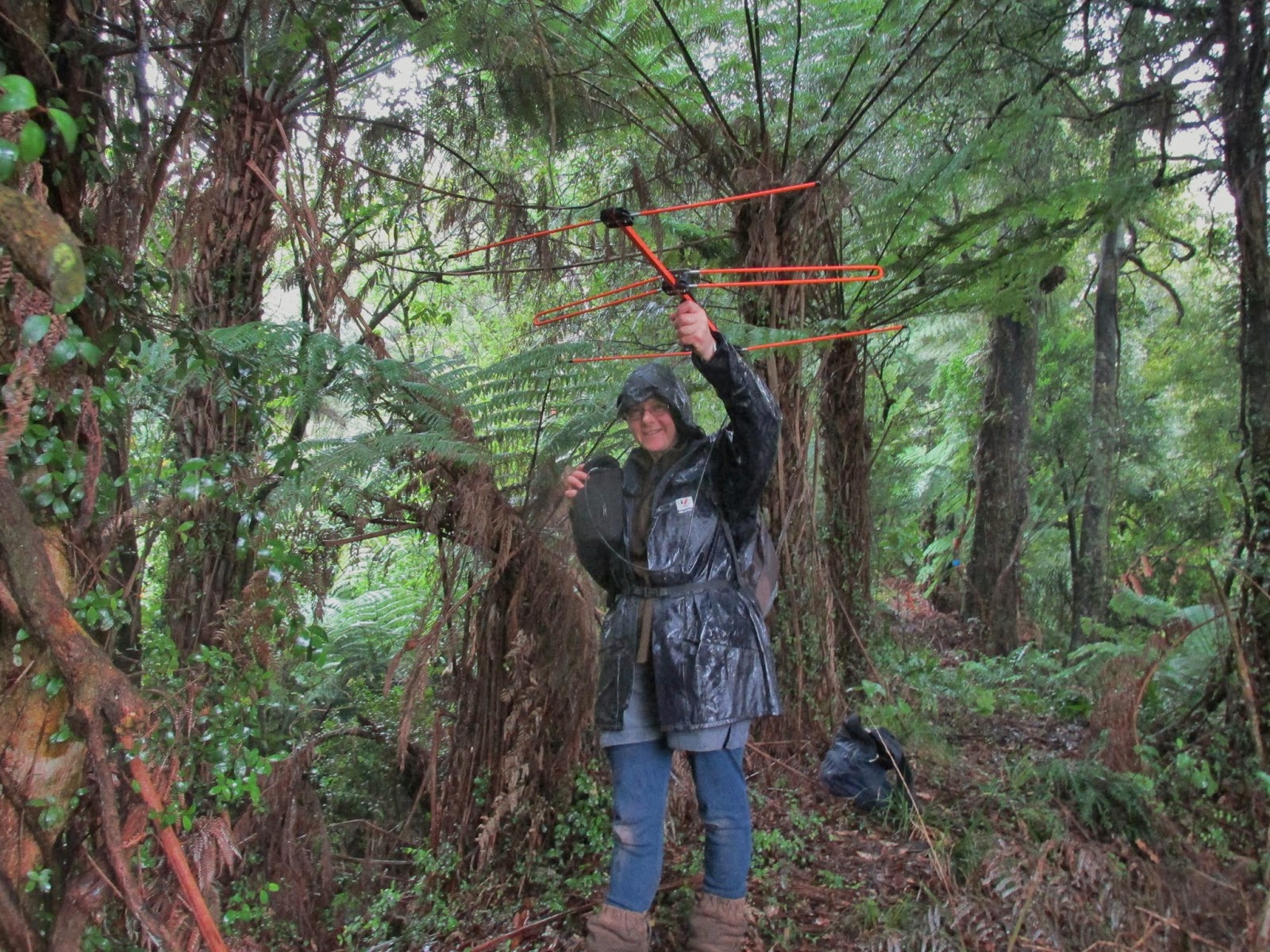Inside the chilly bin were 2 kiwi eggs.
 |
| All packaged up ready to go. Sitting flat on the seat, padded on the sides with padding and securey fastened with the seat belt. |
Our job was to transport the eggs to Rotorua's Kiwi Encounter. This is a purpose built facility that looks after around 250 kiwi eggs a year. At 'K.E,' as it's known, they incubate the eggs and then look after the chicks until they are big enough to go back to where they came from or to be released at another location (remember how I have mentioned how important it is to spread the genetics around in earlier posts.)
Kiwi Encounter is one of a handful of facilities around the country that work as part of the Operation Nest Egg programme which is sponsored by the BNZ bank.
If you are interested in learning more about O.N.E or Kiwi Encounter, follow these links
www.kiwisforkiwi.org
http://www.rainbowsprings.co.nz/247/kiwi/kiwi-encounter
Anyway, back to our story.
As I have mentioned in earlier posts, some of the kiwi at Rotokare wear transmitters so that we can monitor their progress. The battery in their transmitter needs to be changed every 12 months.
So the dilemma began- the transmitter needed to be changed but the kiwi was sitting on not only 1 egg but 2!
Once a kiwi has a transmitter change it is unlikely to return to that burrow. Something we don't want to happen when they are sitting on eggs BUT we can't risk the battery going flat and not being able to find the kiwi again.
This was a perfect example of scientists working with scientists and doing a bit of problem solving. Simon made a call to the experts over at Kiwi Encounter and they suggested that the eggs be 'lifted' when the kiwi was out of the burrow feeding.
Then the plan was put together between the team at Rotokare and the Taranaki Kiwi Trust for how the mission would unfold.
A team would go into the bush late at night, wait for the kiwi to leave his burrow (we know it's a male, as it's the males that incubate the eggs.) The team would then take the eggs and very very carefully package them up ready for their long trip to Rotorua.
I won't write about the process they go through when they lift the eggs as hopefully I can be part of a lift sometime in the near future (and I will write a blog)
So, the eggs- one aged about 35 days and the other about 65 days. Kiwi eggs take about 80 days in the wild to hatch and between 75-78 days in an artificial breeding facility such as K.E
The eggs had been lifted off the nest at 1:30 that morning. Jenny had got back to her place about 4:30. We arrived just before 6.
After a quick loading up of the car, we were off. In side the chilly bin the eggs were beign kept warm with hot water bottles and thick woolen socks! The chilly bin was not opened from the moment the eggs were put in it until they were taken out in Rotorua.
I have to admit to being as nervous as the day I bought Ryan home from hospital after being born. Such precious cargo was being entrusted into my care!
The drive to Rotorua took a long time! I have never noticed how bumpy the roads are and how windy the corners are in some places. Having left Hawera at 6, we didn't get to Rotorua until just before 12.
 |
| Arriving at Rainbow springs |
 |
Ready to take the eggs into K.E  |
Ryan and I were extrememly lucky to see what they do with the eggs!
The kids and I had visited K.E a few years ago and paid for the tour of the facility but being on the other side of the glass this time and having 2 specialists talking with us was amazing.
People on the pulic tours are not allowed to take photos so I felt priviledged to have been allowed.
The eggs are checked over, 'candled' which is where they put illluminate the egg and are able to see the developmental stage of the foetus. They wash the egg, weigh the eggs and probably a few other things that I didn't pick up on.
While Claire worked in the quarantine room doing another round of checks and putting the eggs into the incubator, Ryan and I had the opportunity to have a 'out the back' tour of the rest of the facility. It was totally awesome having a one on one tour with someone so knowledgeable about all things Kiwi. As always I had a million questions!
I'm not sure what the lady's name was that showed us around, but she was interested to hear about how we have been managing our meal worms at Rotokare. That was a real 'feel good' moment for me.
She explained that she works as a casual on call member of the team. Most of the team have some sort of science degree as well as a captive wildlife management certificate from UNITEC in Auckland. I have learnt through my fellowship that this certificate is pretty much a nessecity in NZ for people working with captive animals.
Before even looking at the eggs, paperwork is checked
Carefully unwrapping the eggs
Initial weight of the eggs
Preparing the water for washing the eggs.
On the other side of the glass window were a group of people! I felt really weird being on show.
After an hour at K.E, our job was done.
Thanks Simon and the Rotokare Trust for entrusted me with the job. I can't wait to do it again!















































